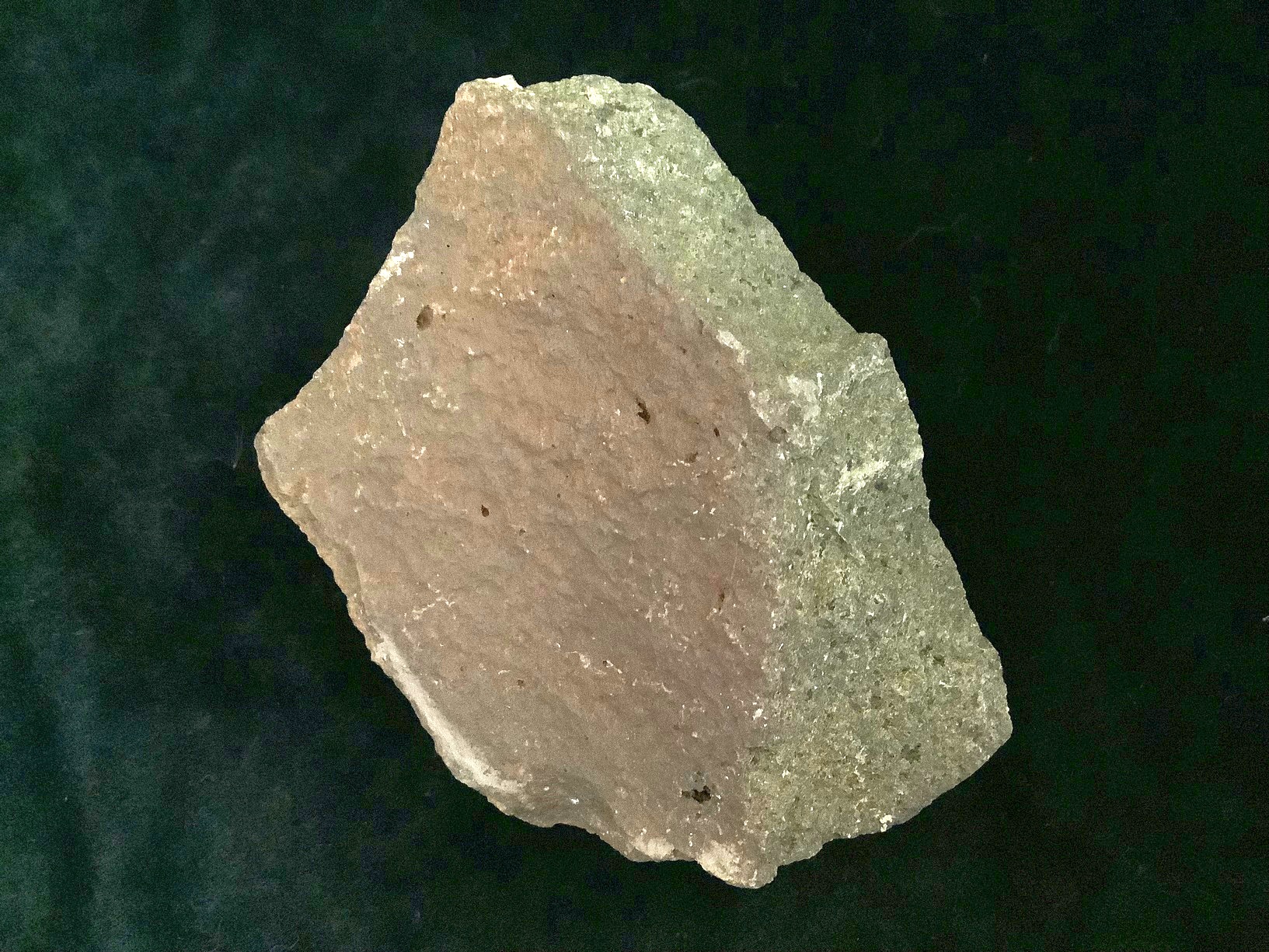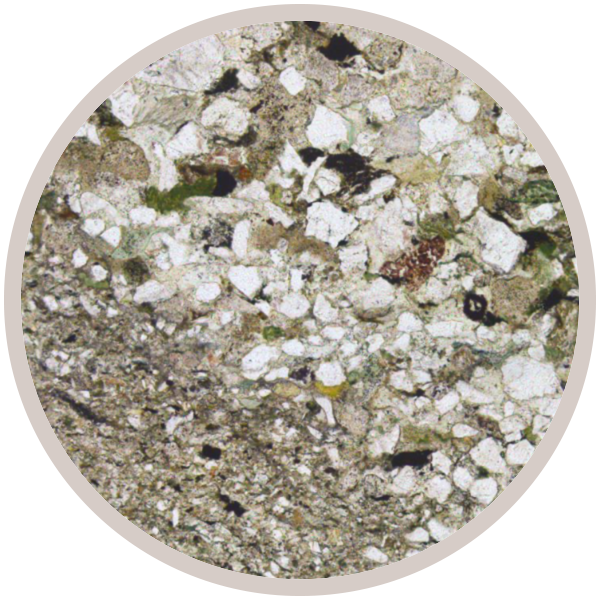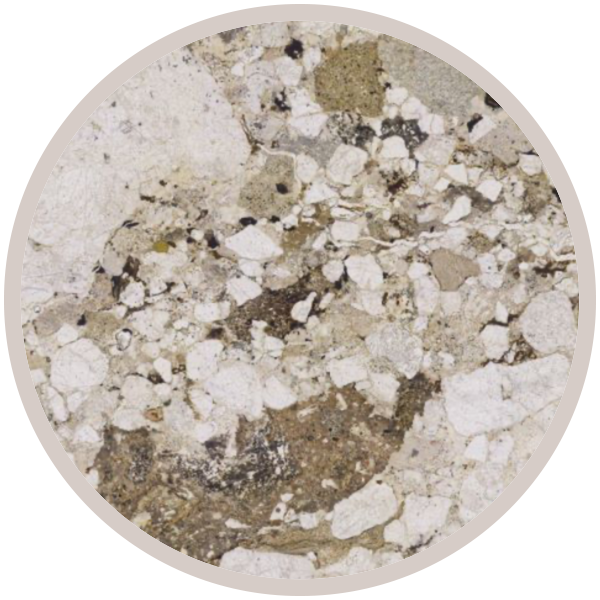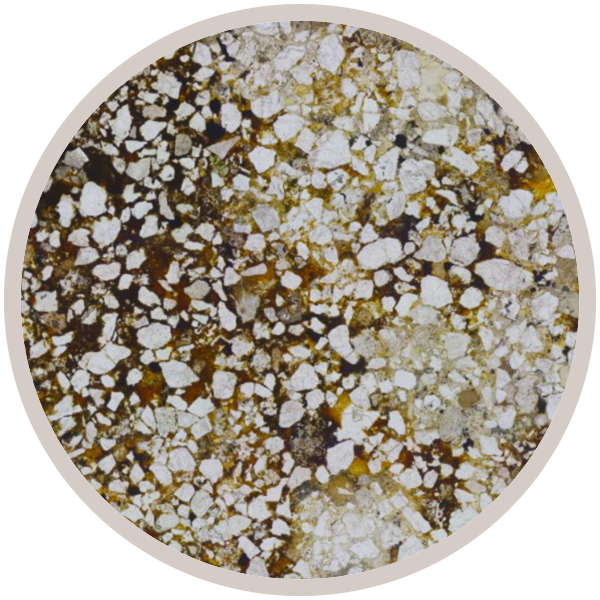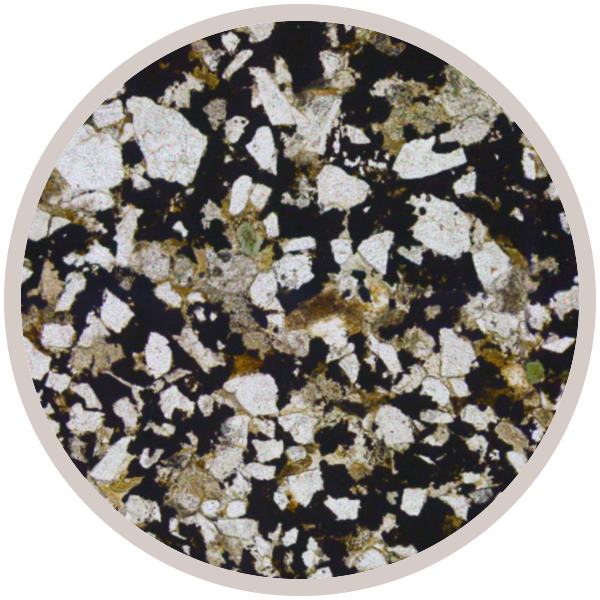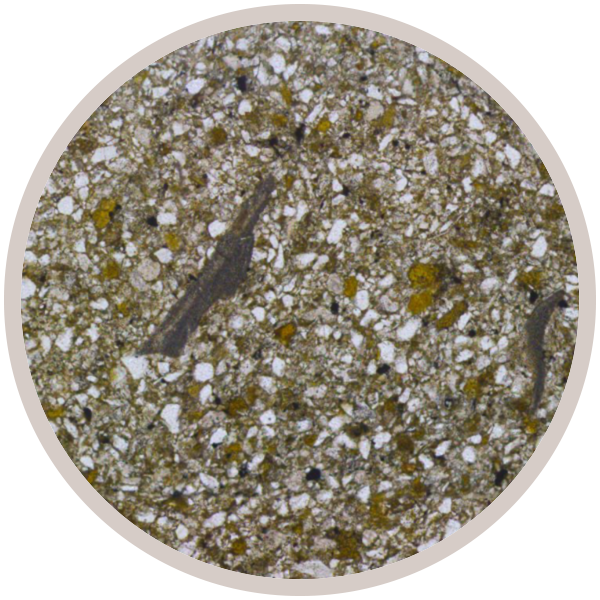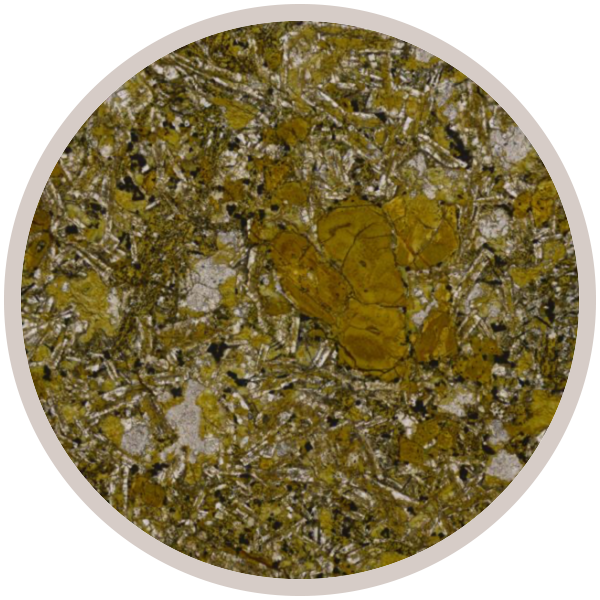
Fact sheet
This sample was collected from exposures near the bottom of Highbridge Road steps, at the same level as the canal, close to Brewin's Cutting.
This fine-grained igneous rock shows a fine igneous texture of interlocking crystals, including randomly-oriented plagioclase laths, some of which show lamellar twinning under XPL. The predominant greenish-brown colour of the thin section is caused by abundant serpentine minerals, notably replacing olivine and pyroxene crystals throughout the rock; you can still see the typical globular or oval shapes of the original olivine crystals. Opaque iron oxide grains are scattered across the whole section; these were likely magnetite in the original igneous assemblage.
Irregular pale patches, with very high ('washed out') interference colours, are also common. These are most likely a carbonate mineral precipitated from fluids passing through the rock, possibly the same pervasive fluids that caused the replacement of olivine by serpentine.
This microgabbro was intruded into the surrounding Carboniferous rocks about 307 million years ago, towards the end of the Carboniferous - perhaps not all that long after the surrounding sediments were laid down. It is likely related to other examples of mafic intrusions and volcanic rocks scattered across central England, notably the volcanic tuffs and agglomerates at nearby Barrow Hill and Tansey Green quarries, less than 3 km to the north-west. Tansey Green is known for preserving trunks of conifer trees in growing position, which appear to have been rapidly buried by volcaniclastic deposits during eruptions at this time. The microgabbro at Brewin's Cutting was probably one of the subsurface conduits feeding these volcanoes.
This sample was collected as part of the 'Macro to Micro' project.
This Collection showcases the geodiversity of a classic geological site: the Saltwells National Nature Reserve in the West Midlands.
As well as displaying thin section and hand specimen views along with information setting them in the context of their landscapes, we also include perspectives and creative responses to the geological heritage of the sites from the local community.
| Explore the stories of the rock layers at Saltwells and Wren's Nest NNRs, designed by students at King Edward VI School, Stourbridge: |
This Collection was made possible by funding awarded to the 'Macro to Micro' project by the Natural Environment Research Council (NERC) under their 'Growing Roots' scheme.
